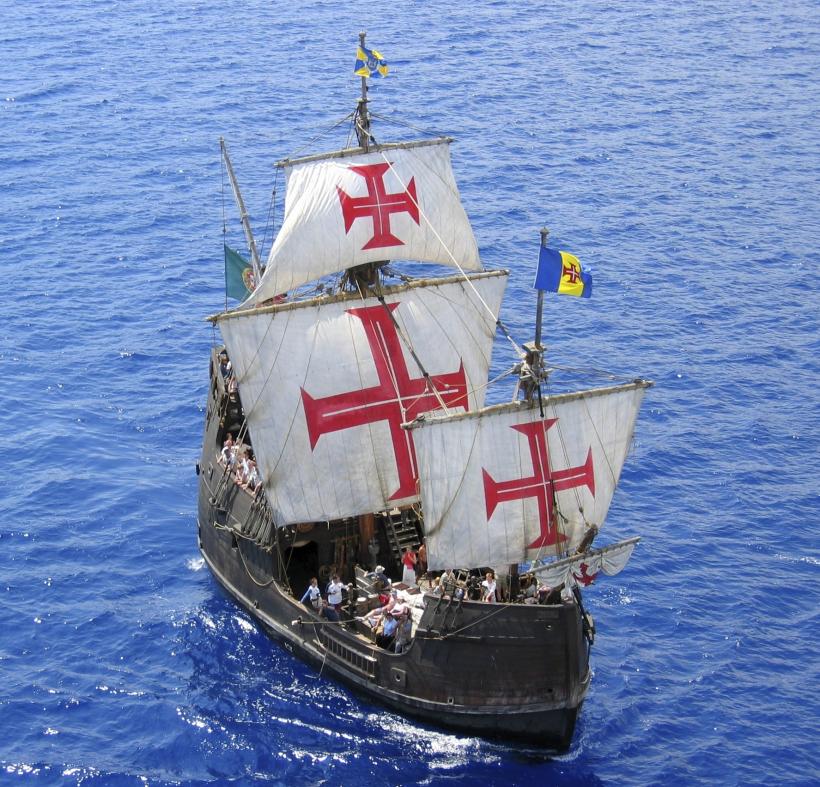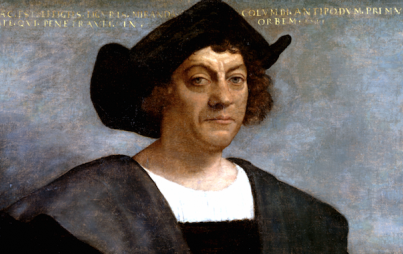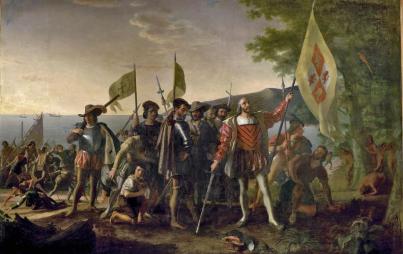
After more than 500 years at the bottom of the balmy sea, an ocean exploration team thinks they’ve found the infamous Santa Maria—Christopher Columbus’ largest ship for the first expedition to North America.
"All the geographical, underwater topography and archaeological evidence strongly suggests that this wreck is Columbus' famous flagship, the Santa Maria," team head Barry Clifford said of the (potentially) astounding find.
The ship’s model was considered the “beast of burden” during the Age of Exploration, roomy enough to carry loads of provisions, and to potentially bring back treasure from an exotic locale for sponsors—one of Columbus’ dearest hopes.
So how did the Santa Maria meet its watery demise? Jazzed to do some exploring, pillaging and genociding, in 1492 Christopher Columbus commissioned the Basque-built Santa Maria to be his flagship. Then away he and his crew went with two other ships in tow, from Spain’s Atlantic coast in search of a western route to Asia.
Of course he got to the Bahamas instead (unbeknownst to him), and ultimately returned back to Spain to report his discovery to his Spanish royal patrons. But not before losing the Santa Maria, which—embarrassingly—had simply drifted off one night off the northern coast of Haiti and onto a coral reef—with Columbus onboard. The ship was abandoned as one of the first casualties of Columbus’ forays.
Before the ship sank, it’s believed that Columbus ordered some of the ship's wood to be stripped in order to build a fort on land near the shore. And that’s what tipped off Clifford’s team, after archaeologists determined evidence for the location of the fort (which had probably been destroyed by locals ravaged by European diseases and forced labor) in Haiti. Based on this location, and Columbus’ diary, the team narrowed down the possible location for the sinking, which coincided with a wreck they had previously tagged in 2003.
Clifford is now working with the Haitian government to carry out a full excavation of the wreck. Unfortunately, conclusive identification may be more difficult now than it would have been in 2003, since illicit raiders seem to have taken key diagnostic objects, like a cannon the team had photographed previously.
But there’s still hope for positive identification based on the remaining features, and Clifford hopes to conserve any viable timbers to put on permanent public exhibition in Haiti. "I believe that, treated in this way, the wreck has the potential to play a major role in helping to further develop Haiti's tourism industry in the future,” he said.
And if anyone could use a boon to the local economy, it’s Haiti. After decimating the native population of Hispaniola, and instigating European slavery in the New World which ultimately led to transporting African slaves to Haiti, it's poetic justice for Columbus to potentially help the tumultuous island 500 years later.
Image: ThinkStock


